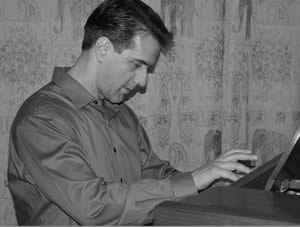A good house was treated to an unhackneyed program of music presented by the North Carolina Symphony in Meymandi Concert Hall January 31. Twenty-nine year old Michael Christie was the very able guest conductor. None of the works selected could be considered a warhorse or old chestnut on Triangle programs.
Cutting-edge works by Toru Takemitsu heard on major orchestra programs broadcast by WUNC-FM in mythic decades when it was a traditional public radio station did not augur well for the first sections on the program. The five short works, two antiphonal brass works, “Day Signal – Signals from Heaven I” and “Night Signal – Signals from Heaven II,” sandwiched three film scores arranged for strings. Both signals made full use of the stereo effect by having each group placed on opposite sides of the chorus seating above the stage. Brass color was explored and the last had hints of the influence of Messiaen. None of the selections had a taxing hint of John Cage or Iannis Xenakis, composers whose style can be felt in Takemitsu’s more advanced works.
The three string works proved both surprising and delightful. “Mittsu no eiga ongaku” (Three Film Scores for Strings) (1994) consists of transcriptions of music from three movies. The first, “Music of Training and Rest” from Jose Torres , was bluesy, jazzy and plushly romantic by turns. “Funeral Music,” from Black Rain , was a somber accompaniment for the bleak scenes of devastation of Hiroshima with eerie effects such as bowing close to the bridge and other unique color effects. The “Waltz” from Face of Another , was in a minor key and was as effective as anything by Tchaikovsky. I hope the effectiveness of the antiphonal portions may inspire a future music director to program late Renaissance and early Baroque choral, brass and chamber orchestra music composed by Venetians for the Church of San Marco. Christie was efficacious, leading with a clear and unintrusive beat and no dramatic calisthenics.
Canadian pianist Jon Kimura Parker had previously appeared twice on the Duke Artists Series, once with an orchestra and later in a solo recital. He brought a crystalline clarity and fine sense of line to Mozart’s Piano Concerto No. 21 in C, K.467. All sections of the reduced orchestra were at their peaks with wonderful glowing woodwinds and all sections perfectly balanced. Christie again secured some of the finest and most detailed string playing of the season. The dreamy, reverie-like slow movement will be long remembered. It is popularly known for its use in the movie Elvira Madigan.
Christie directed a masterful performance of Sibelius’ Symphony No. 5 in E-Flat, Op.82. Again, all sections played at the top of their form. Detailed string articulation was extraordinary, and the subtlest “pp” ever heard from the symphony was unprecedented. The overall sweep was breathtaking. Based on this concert, Christie ought to be one of the candidates to be asked back. He spoke briefly from the stage before each half of the concert. His warning about the final six chords of the Sibelius prevented premature applause spoiling the performance. He mentioned that the famous theme in half notes for four horns (played magnificently) in the third movement was suggested to Sibelius by a circling flock of swans.











